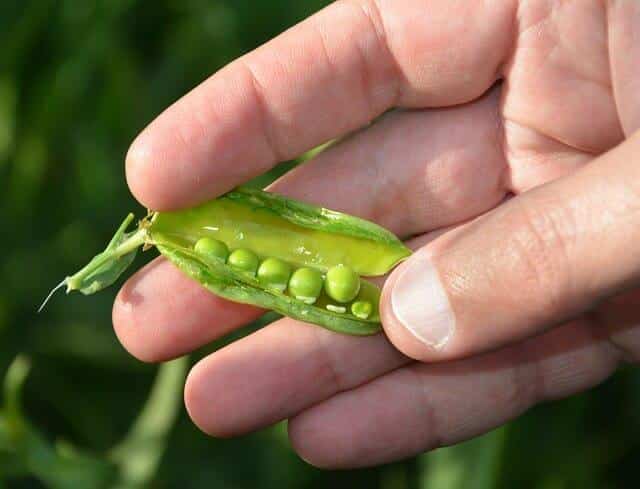During early spring, the urge to get out in the garden and start planting almost becomes overwhelming.
Stores are stocking up on gardening tools, and seeds are luring me in with the promise of a bountiful harvest. I take full advantage of the warmer climate where I live. But if you live up north you may be hesitant, knowing winter may still throw a few frosty nights at you.
Go ahead and get your gardening gloves out; you can avoid pre-season garden blues by planting frost-resistant plants this spring.
Here are a few ideas:
1. Peas
Snow peas, snap peas or other varieties are easy-to-grow veggies that do well in early spring. With their large seeds, they’re perfect for even the smallest hands to plant. Useful for getting restless kids (and grandkids) out of the house and into the yard, peas do well in early spring – even with a late frost. They’ll grow as vines or bushes, and can take up to 65 days to mature. Plant more than you think you’ll need – the harvest seems to disappear with these easy-to-reap veggies that are loved by both grown-ups and kids alike.
2. Spinach
Baby spinach is a quick sprouting addition to an early spring garden. You can harvest in as little as three weeks, giving you small, tender leaves to use in salads and cooking.
The All-Natural Fertilizer That Can Double Your Garden Yield!
Spinach is frost-resistant, but seems to thrive when grown under cover, so consider using a garden cover the first few weeks after planting. To help prevent loss from frost, plant spinach close together and harvest early. Plant a few varieties to have an assortment of greens from which to choose.
3. Chard
Another type of green that grows well in early spring, chard gives your garden a sneak peek at the bursts of color that warm weather brings. For a beautiful display, add yellow, red or white varieties to your planting rows. Sow seeds close together, and then harvest young growth to thin the seedlings. Some chard is available for harvest within 25 days, while others can be grown longer to reach full size. Use chard fresh, toss some into a blender for a nutritious smoothie addition, or cook leaves for a delicious addition to soups.
4. Beets
Beets thrive with cooler weather, and seem to do best before the ground heats up. You can plant beets up to a month before the last frost. This prevents their roots from becoming woody, and it gives them a sweet taste. Beets mature in 60 days and should be approximately two inches wide at harvest. Plant seeds three to four inches apart for optimal growth. Their lovely greens add bright stripes of green to your garden.
5. Carrots
Perfect for locations with heavy soil, carrots take longer than most vegetables to germinate. Sow carrot seeds directly in the soil, but plant more than you will need, because germination is spotty. Get them in the ground up to a month before the last frost, and then thin out the seedlings when you start to see leaves appearing. This is another fun plant to send your kids out to harvest, but don’t be surprised at their abnormal shapes. Depending on your soil, it can split the roots and produce funny-looking carrots that taste delicious!
6. Lettuce
Lettuce can be hard to germinate, so for best results, start some indoors and then transplant seedlings in early spring. They can be moved to your garden up to six weeks before the last frost. Sow additional seeds around the transplants for succession plants, giving you a season-long supply of lettuce. Cover the seeds with a light soil. Harvest leaves when there are enough on the plant for continued plant growth.
Don’t let the fear of frost keep you from getting a head start on your garden. Use cool weather-friendly plants to ease into spring, and enjoy the tender produce your garden will grow before hot weather sets in.
What frost-tolerant or frost-resistant plants would you add? Share your tips in the section below:
 Off The Grid News Better Ideas For Off The Grid Living
Off The Grid News Better Ideas For Off The Grid Living





